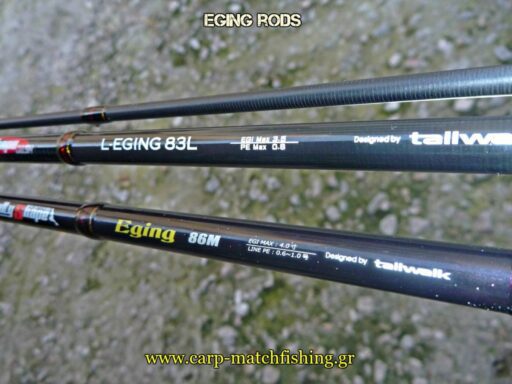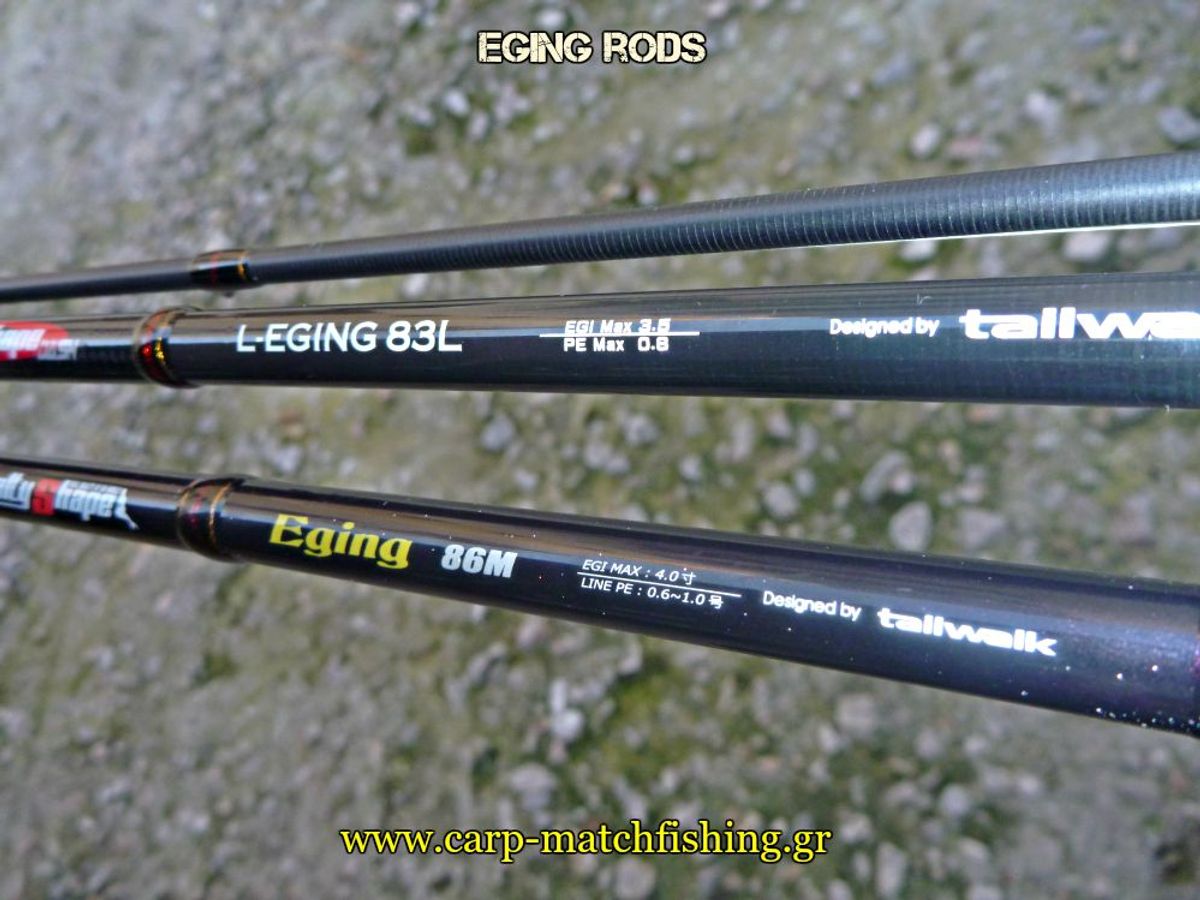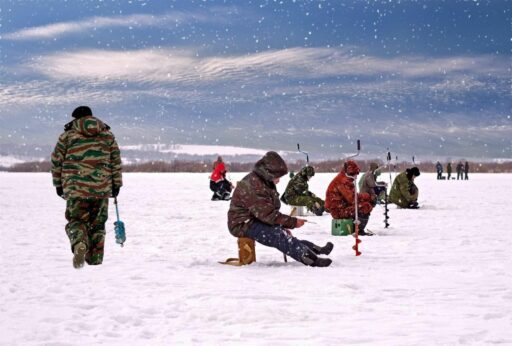Ice fishing is an exhilarating winter sport that requires specialized gear for success and comfort in the frigid environment. Among the most crucial equipment is the ice fishing rod blank, which forms the foundation of a customized fishing rod. This essential guide provides insights into selecting the perfect ice fishing rod blank, taking into account factors such as materials, construction, length, power, and advanced features to enhance your ice fishing experience. Whether you’re targeting a specific species or looking for a rod that can handle various fishing techniques, this guide will help you make an informed decision.
Key Takeaways
- Understanding the materials and construction of ice fishing rod blanks is fundamental to choosing a rod that fits your fishing style and conditions.
- Customizing your ice fishing rod with the right handle material, guide rings, and hook keepers can significantly affect comfort and efficiency.
- Advanced features like high-precision golf grips, titanium spring bobbers, and high-visibility strike indicators offer enhanced control and sensitivity.
- Selecting the appropriate rod blank for the targeted species is critical for optimizing your chances of a successful catch and improving your overall fishing experience.
- Practical considerations such as durability, ease of use, transportation, and maintenance are as important as the technical specifications of the rod blank.
Understanding Ice Fishing Rod Blanks

Materials and Construction
The foundation of any ice fishing rod is its blank, which dictates the overall performance and durability of the rod. Choosing the right materials and construction is crucial for a successful ice fishing experience. Most blanks are made from fiberglass, graphite, or a composite of both, offering a balance between flexibility and sensitivity.
- Fiberglass is known for its durability and forgiving nature, making it a great choice for beginners or those targeting larger fish.
- Graphite, on the other hand, is lighter and more sensitive, ideal for detecting subtle bites in the frigid waters.
- Composite blanks combine the best of both worlds, providing a good mix of strength and sensitivity.
When selecting a rod blank, consider the type of fishing you’ll be doing and the species you’re targeting. For instance, a stiffer blank may be necessary for jigging through thick ice, while a more flexible blank could be better for finesse fishing. Mud Hole offers a wide range of rod building tools and components from trusted brands like MHX, CRB, Fuji, and more, ensuring you have access to the best materials for your custom rod.
Rod Blank Length and Power
The length and power of an ice fishing rod blank are critical factors that determine its performance and suitability for specific fishing conditions. Rod blanks with varying lengths and power ratings cater to different fishing styles and species. For instance, shorter rods are typically used for jigging in tight spaces, while longer rods are preferred for tip-up fishing or when fishing in a shelter.
When considering power, it’s important to match the rod to the anticipated fish size and the weight of the lures or baits being used. Medium (M) power rods are versatile and suitable for a range of species, from panfish to walleye. Here’s a quick reference for some popular rod blank specifications:
- Casting 7′ / Power M / Action Fast
- Spinning 5’6" / Power M / Action Fast
- Spinning 6′ / Power M / Action Fast
The right combination of length and power ensures a balanced rod that can handle the stresses of ice fishing while providing the angler with the necessary control and sensitivity.
It’s also worth noting that advancements like the SSR Ice Rod Guide Kits from Mud Hole have revolutionized the way rod guides are used, allowing for fewer guides while maintaining efficient line transition. This can affect the overall feel and performance of the rod, making it an important consideration when selecting your ice fishing rod blank.
Action and Sensitivity
The action and sensitivity of an ice fishing rod blank are crucial for detecting bites and successfully hooking fish in the frigid environment. Rod action refers to the point where the rod begins to bend when pressure is applied; faster actions bend closer to the tip, while slower actions involve more of the rod. Sensitivity, on the other hand, is the rod’s ability to transmit vibrations from the line to the angler’s hand, allowing for the detection of subtle bites.
When selecting a rod blank, consider the type of lure or jig being used. Lighter lures typically require a more sensitive rod with a faster action to ensure immediate bite detection. For larger lures and baits, a slower action may be more appropriate, providing the strength needed for larger fish.
The balance between action and sensitivity must be tailored to the angler’s style and the targeted species to maximize the ice fishing experience.
It’s also worth noting that some manufacturers, like St. Croix Rods with their MOJO ICE RODS, offer features such as a precision-taper solid carbon blank and a custom reel seat that cater to various fishing techniques, enhancing the overall sensitivity and performance of the rod.
Customizing Your Ice Fishing Experience

Choosing the Right Handle Material
The handle of your ice fishing rod is more than just a point of contact; it’s the nexus of control and comfort during your fishing expeditions. Choosing the right handle material is crucial for enhancing grip, reducing fatigue, and improving overall performance.
Cork handles are renowned for their comfort and non-slip properties, making them a popular choice among anglers. EVA handles, on the other hand, offer excellent shock absorption and durability, often preferred in harsher conditions. Here’s a quick comparison:
- Cork Handles: Non-slip, comfortable, better for long-time fishing.
- EVA Handles: High toughness, good shockproof and cushioning properties.
When customizing your ice fishing rod, consider the balance between tactile sensitivity and insulation against the cold. A well-chosen handle can make a significant difference in your ice fishing experience.
Additionally, the market offers a variety of handle types, such as split rear grips, full-length grips, and fighting butts, each designed to cater to different fishing styles and preferences. It’s important to match the handle to your specific needs to ensure the best possible ice fishing experience.
The Importance of Guide Rings
Guide rings play a pivotal role in the performance of ice fishing rods. The choice of guide ring material can significantly affect the rod’s sensitivity and line management. Stainless steel guides with ceramic rings are a popular choice due to their ability to dissipate heat effectively, ensuring the fishing line releases smoothly and minimizes friction.
Guide protectors, often made of plastic with a rubber band, are essential for maintaining the integrity of your guide rings. They prevent damage during transport and storage, keeping the inner sections stable and secure.
When selecting guide rings, consider the following factors:
- Smoothness of the ceramic ring interior
- Durability of the stainless steel frame
- Compatibility with your fishing line type
Remember, the right guide rings enhance your ice fishing experience by providing a seamless line flow and improved sensitivity, which could be the difference between a good day and a great day on the ice.
Innovations in Hook Keepers
In the realm of ice fishing, hook keepers have evolved to offer more than just functionality; they now enhance the overall fishing experience. The latest designs ensure that hooks and lures are securely held, reducing the risk of tangles and facilitating quicker bait changes. For instance, the Safe & Tough Hook Keeper not only secures lures and weights but also adds a touch of style to your rod.
Modern hook keepers are designed with convenience in mind. The Easy-Peasy Hook Keeper, for example, allows anglers to quickly secure their hook, keeping the line organized and ready for action. This small addition to your ice fishing rod can make a significant difference when you’re out in the cold, trying to manage your gear with gloved hands.
The integration of innovative hook keepers into ice fishing rods is a testament to the continuous improvement of fishing gear, aimed at providing a seamless angling experience.
When selecting a hook keeper, consider the types of fishing you engage in. A website dedicated to fishing rods can offer valuable insights into the various types of fishing, including tips, techniques, and the latest gadgets. It’s important to choose a hook keeper that complements your fishing style and the species you target.
Advanced Features for Enhanced Performance

High-Precision Golf Grip for Better Control
The grip of an ice fishing rod is crucial for maintaining control and sensitivity during the fishing experience. High-precision golf grips offer a significant advantage in terms of comfort and grip quality. These grips are designed to provide a firm hold even in the coldest conditions, ensuring that anglers can react quickly to bites and maintain control over their rod.
Options for rod grips include materials such as PU and soft EVA, each with its own benefits. PU grips are known for their durability and firmness, while EVA grips offer a softer touch and may be preferred for their comfort during extended use.
The choice of grip material can greatly influence your ice fishing success, as it affects both the control you have over the rod and your ability to detect bites.
When selecting a grip, consider the following aspects:
- Personal comfort and preference
- The typical weather conditions you fish in
- The level of sensitivity required for your fishing style
Remember, a well-chosen grip can enhance your ice fishing experience, providing not just better control but also reducing fatigue during long fishing sessions.
Titanium Spring Bobbers for Sensitivity
In the pursuit of detecting the faintest nibbles beneath the ice, titanium spring bobbers have become an invaluable tool for the ice angler. Their unmatched sensitivity allows for the perception of even the most subtle bites, often the difference between a successful catch and a missed opportunity.
Titanium spring bobbers attach to the tip of your rod, providing a visual cue that can indicate a fish’s interest before you feel it. This feature is especially useful when targeting finicky panfish that are known for their light biting behavior.
To optimize your setup, consider the following options:
- Easy Bite Detection Titanium Tip: For those elusive panfish.
- Lightweight Hybrid Carbon Fiber Blank: Enhances control and sensitivity.
- Tailored Material Choices: Select from PU or EVA handles for comfort.
Remember, the right spring bobber can transform your ice fishing experience, offering you the finesse needed to outsmart your underwater adversaries.
High-Visibility Strike Indicators
High-visibility strike indicators are a game-changer for ice anglers who need to detect the subtlest bites in frigid conditions. These indicators amplify the visibility of any nibbles or strikes, making it easier to react swiftly and increase your catch rate. The OROS STRIKE INDICATORS 6 PK, for instance, features a unique design that positions the strike indicator centrally on your leader or tippet, enhancing casting control and reducing line entanglement.
Strike indicators are not just about visibility; they also play a crucial role in presenting your bait naturally. The right indicator can mean the difference between a successful day on the ice and going home empty-handed.
When selecting strike indicators, consider the following factors:
- The weight and size of the indicator should match your fishing setup.
- Choose indicators that are easy to attach and adjust for varying depths.
- Opt for indicators that can withstand the harsh conditions of ice fishing without losing their high-visibility properties.
Selecting Rods by Targeted Species

Specialized Rods for Different Fish Types
When targeting specific fish species, the right rod can make all the difference. Fishing rods tailored to specific species are designed to enhance your angling experience by matching the fish’s habits and characteristics. For instance, bass rods are built to withstand heavy cover, while walleye rods are fine-tuned for jigging precision.
Our collection includes rods for various species, each with features that cater to the preferred lures and techniques for those fish. Here’s a quick overview of some options:
- Bass Spinning Rods: Strong backbone, sensitive to bites
- Bass Casting Rods: Heavy-duty, suitable for heavy lures
- Walleye Spinning Rods: Designed for precise jigging
- Walleye Trolling Rods: Optimal for trolling techniques
- Trout Spinning Rods: Ideal for lightweight lure finesse
The effectiveness of these rods lies in their specialized design, which optimizes casting accuracy, lure control, and fish-fighting capabilities. With the right rod, you’re not just fishing; you’re crafting an experience that heightens your chances of a successful catch.
At FishUSA, we recognize the nuances of species-specific angling. Our selection from trusted brands ensures that whether you’re after bass, walleye, or trout, you’ll find a rod that meets your needs and elevates your fishing to the next level. Remember, selecting the right rod is not just about the catch; it’s about the entire angling experience. Making a rod is rewarding but time-consuming, so follow guidelines for satisfaction.
Matching Rods to Fishing Techniques
Selecting the right ice fishing rod for specific fishing techniques is crucial for optimizing your catch rate. The effectiveness of a rod is often determined by how well it matches the intended fishing method. For instance, jigging for walleye requires a different rod characteristic than setting up tip-ups for pike.
- Jigging: A medium-light to medium rod with fast action for sensitivity and quick hook sets.
- Tip-ups: A heavier rod with moderate to slow action to handle larger bait and fish.
- Dead sticking: A rod with a softer tip to detect subtle bites, often paired with a bobber.
It’s important to consider the type of lure and presentation when choosing a rod. A rod that’s too stiff may not present a jig effectively, while one that’s too flexible might lack the power for a solid hookset in deeper water.
Understanding the nuances of each technique and the species you’re targeting will guide you to the most suitable rod. Whether you’re finesse fishing for panfish or aggressively targeting predatory species, there’s a rod that’s been engineered to enhance your specific style of ice fishing.
The Role of Rod Action in Species-Specific Fishing
When targeting specific species, the action of your ice fishing rod becomes a critical factor in optimizing your catch rate. Fast-action rods are ideal for species that require quick hook sets, such as walleye or bass, where the slightest delay can mean a missed opportunity. Conversely, a slower action may be better suited for species like trout, where a more forgiving bend allows for a delicate presentation of lures and can prevent tearing the hook from a soft-mouthed fish.
- Fast-action rods: Quick hook sets for walleye and bass
- Moderate-action rods: Balanced flexibility for a variety of species
- Slow-action rods: Delicate presentations for trout
Choosing the correct rod action for the species you’re targeting not only enhances your fishing technique but also ensures that you have the right tool to handle the fight once you’ve hooked your quarry. It’s about finding the sweet spot where rod performance meets the behavioral patterns of the fish.
The right rod action can make all the difference in your ice fishing success. It’s not just about the strength or the length; it’s about how the rod transfers energy from the lure to the hook, and ultimately, to your hands.
Practical Considerations and Maintenance

Durability and Longevity of Ice Fishing Rods
When selecting an ice fishing rod, durability and longevity are paramount. The materials and construction of the rod blank directly influence its lifespan and performance in harsh winter conditions. Ice fishing rods must withstand extreme temperatures and resist snapping under the pressure of a struggling catch.
- Choose rods with high-quality materials such as graphite or fiberglass for strength and flexibility.
- Look for rods with reinforced guide rings and secure hook keepers to prevent wear and tear.
- Consider the handle material; EVA grips are known for their durability and comfort.
Regular maintenance and proper storage are essential to extend the life of your ice fishing rod. Avoid leaving your rod exposed to the elements when not in use, and clean it thoroughly after each trip to prevent corrosion and damage.
By investing in a well-constructed rod and caring for it diligently, you can enjoy many successful ice fishing seasons.
Ease of Use and Transportation
When selecting an ice fishing rod blank, ease of use and transportation are critical factors to consider. Compact and lightweight designs make for hassle-free travel and storage, ensuring that your gear is always ready for the next adventure. Many anglers prefer rods that can easily fit into a backpack or the trunk of a car, offering both convenience and portability.
- Compactness: Look for rods that can be broken down into smaller pieces or are inherently short, making them ideal for transport.
- Weight: A lighter rod won’t be a burden during long treks to your fishing spot.
- Travel-friendly features: Some rods come with travel cases or protective tubes.
The right ice fishing rod should feel like an extension of your arm, with a comfortable grip and balance that doesn’t tire you out during a long day on the ice.
Cleaning and Storage Tips
Proper cleaning and storage of your ice fishing rod blanks are crucial for preserving their performance and extending their lifespan. Always clean your rods with fresh water and a mild detergent after each use to remove any salt, dirt, or biological material that could corrode or damage the rod over time.
When storing your rods, avoid places with extreme temperatures or direct sunlight. A rod rack or a dedicated storage bag can provide the necessary protection and organization. Here’s a simple checklist for rod maintenance:
- Rinse rods with fresh water
- Use a soft cloth and mild detergent
- Dry completely before storage
- Store in a cool, dry place
- Use a rod rack or protective bag
Remember, taking the time to properly care for your ice fishing gear will ensure that it remains reliable and ready for your next winter adventure.
Conclusion
In the frosty world of ice fishing, the right rod can make all the difference between a good day and a great one. This guide has aimed to equip you with the knowledge to select the perfect ice fishing rod blank that suits your style, preferences, and the specific species you’re targeting. From understanding the subtle bites with high-visibility strike indicators to choosing the right handle material for a comfortable grip, every detail matters. Whether you’re drawn to the precision of a PU grip or the classic feel of an EVA handle, the choice is yours. Remember, the effectiveness of your ice fishing experience hinges on the specialized design and features of your rod. So, take the time to consider your options, and you’ll be well on your way to more successful and enjoyable ice fishing adventures.
Frequently Asked Questions
What are the key factors to consider when choosing an ice fishing rod blank?
The key factors include the material and construction of the rod, the length and power suitable for your fishing needs, the action and sensitivity for detecting bites, and any specialized features that enhance performance, such as high-precision grips or titanium spring bobbers.
How does rod blank action affect my ice fishing experience?
Rod blank action determines how much and where the rod bends when pressure is applied. Fast-action rods bend near the tip, providing better sensitivity for detecting subtle bites, while slower-action rods bend closer to the handle, which can be better for fighting larger fish.
Why is the handle material important for ice fishing rods?
The handle material affects comfort, grip, and control in cold conditions. Materials like high-precision PU and soft EVA provide different levels of warmth and grip, allowing you to choose based on personal preference and fishing conditions.
What role do guide rings play in ice fishing rods?
Guide rings help to distribute the line evenly along the rod and reduce friction during casting and retrieval. Upgraded stainless steel guide rings are more compact and smooth, enhancing the rod’s overall performance and durability.
How do I select the right ice fishing rod for different fish species?
Selecting the right rod for different fish species involves considering the preferred lures, techniques, and environments for each species. Look for specialized rods with features like fast-action tips and durable blanks that are tailored to the fish you’re targeting.
Can you provide any maintenance tips for ice fishing rods?
To maintain your ice fishing rod, clean it with mild soap and water after use, check for any damage to the guides or handle, and store it in a cool, dry place. Regular maintenance ensures durability and longevity of your rod.





